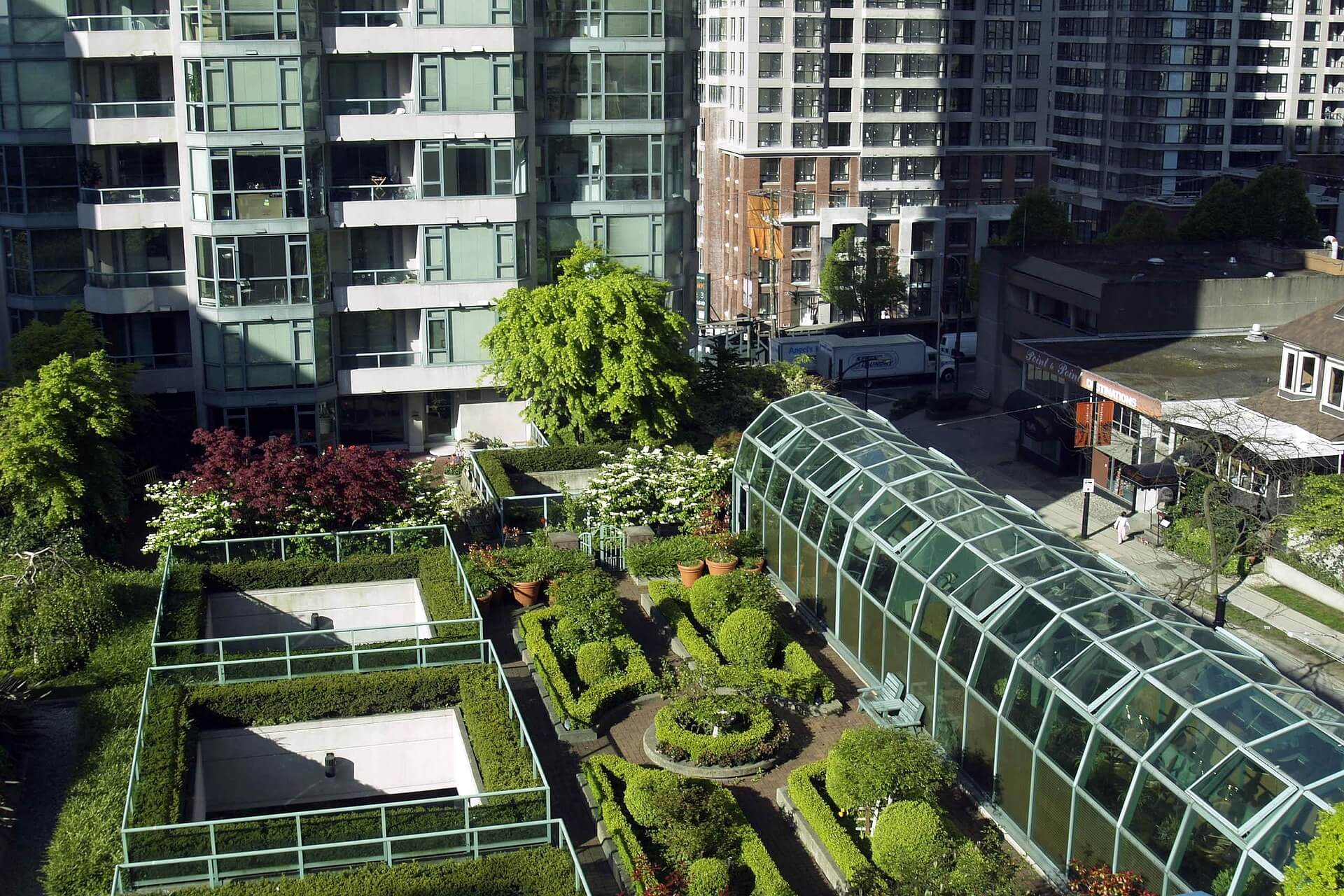The trend of sustainable architecture is growing in popularity. While there are many different techniques and designs incorporated in these more eco-friendly facilities, one of the most impactful is the vegetative roof system.
What Are Vegetative Roof Systems?
Vegetative roof systems are also known as living roofs, or more commonly, green roofs. As the name suggests, vegetative roofs are a design in which plants are used to create a green space on top of a building. Typical green roofs consist of multiple layers, including a durable waterproof foundation, a root management system, drainage layers, and some type of growing medium. While some people choose to grow vegetation in large containers on top of roofs, true green roofs are those that are physically part of the roofing system.
Vegetative roofs are already well known in many European countries thanks to their government’s efforts in education, promotion, and financial support. Unfortunately vegetative roofs remain fairly unpopular in North America, simply due to a lack of exposure to this design. The green roof is not only an innovative idea, but a time-tested method of bringing a significantly positive impact to both residential and commercial roofing.
Striving to build more eco-friendly and energy-efficient buildings is a priority as the negative environmental impacts of construction become more apparent. These green roofs offer such a range of different advantages it would be foolish to not consider them in remodels or new builds.
What Are The Advantages Of Vegetative Roof Systems?
Here are 5 advantages to keep in mind when considering a vegetative roof:
- Aids Water Runoff Control
Water runoff can be a troublesome problem for many businesses, especially those in urban area that often experience storms. The vegetative roof system naturally controls water by reducing the amount of runoff and absorbing contaminants in the water. This happens because the soil media used in construction will soak up some of the water as well as slow down how quickly watersheds from the roof.
- Improves Air Quality
The correlation between an increase of vegetation improving air quality is already well-known. Green roofs not only help produce oxygen but also reduce air pollution. The area of the average commercial building’s roof is a large section of space for planting. While one building may not make a huge impact, if numerous buildings take on the development of green roofs the air quality will add up.
- Provides Energy Savings All-Year
One of the biggest selling points of adopting a vegetative roof system are the energy savings, making this construction tempting for both commercial and residential roofs. Advanced vegetative roof designs act as a barrier between outdoor temperatures. This insulates the building from temperature swings in a couple different ways, including maintaining more consistent temperatures.
- Lengthens Roof Membrane Lifespan
Similarly to how a vegetative roof insulates against outdoor temperatures, the design of these roofs also protects the roof membrane. Conventional roof membranes exposed to the elements will degrade more quickly. The membrane used in vegetative roofs won’t be exposed to UV rays or other environmental stresses.
- Adds a Versatile Aesthetics
Perhaps not an advantage for a residential home, commercial buildings with a green roof can be a huge morale boost for office settings. While a typical roof is hardly a space to relax, a green roof can have seating added to it and become accessible to building tenants. Adding more vegetation in an urban setting has a number of benefits on it’s own, let alone as a quiet, recreational place for people.
Buildings in any region can find advantage in green roofs, but city environments are particularly good places to incorporate these living roof systems.
How Can Cities Benefit From Vegetative Roof Systems?
Cities can really benefit from the water runoff control since storm-water drainage and treatment systems can easily be stressed after heavy precipitation. Since a building in an urban setting will largely be surrounded by concrete, the water control advantage of green roofs becomes very important.
Another city-specific issue vegetative roofs can help alleviate is Urban Heat Island (UHI) effect. The UHI effect describes the warmer temperatures found in urban areas caused by human activities. Cities have higher temperatures compared to rural settings, with these differences being most obvious in summer and winter. The primary cause of this phenomenon is a combination of the construction of buildings, reduction of natural land, and heat produced from energy usage. Vegetative roof systems are believed to be one of few effective solutions of equalizing the UHI effect.
Finally, bringing more plants and nature back in urban settings is easier done on commercial roofing than allocating space on the ground. While a green roof isn’t going to offer the same environmental benefits as land, it is a solution for helping support the environment while construction of buildings is needed. Striving to plant native plants on vegetative roofs is highly recommended as it offers a place for wildlife, insects and important pollinators to find natural food sources.
When it comes to new construction of commercial roofing, considering a vegetative roof system in place of traditional materials is highly recommended. Not to mention energy-efficient buildings that incorporate green roofs can benefit if they wish to achieve LEED certification.













Leave a Comment